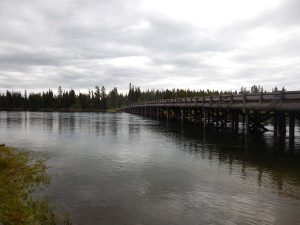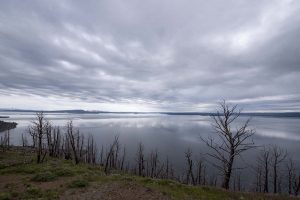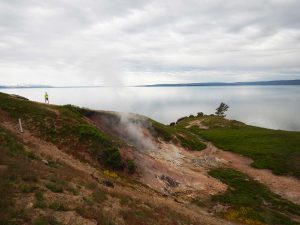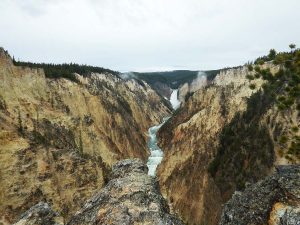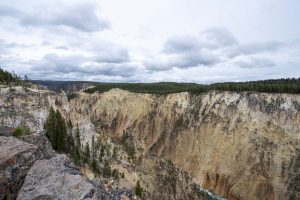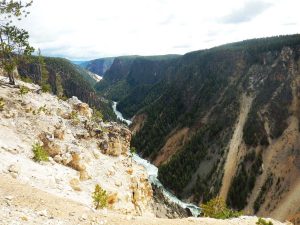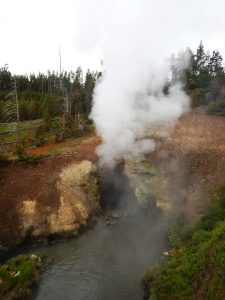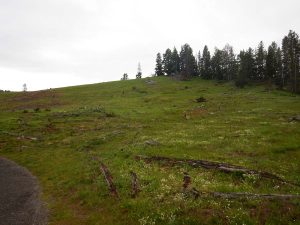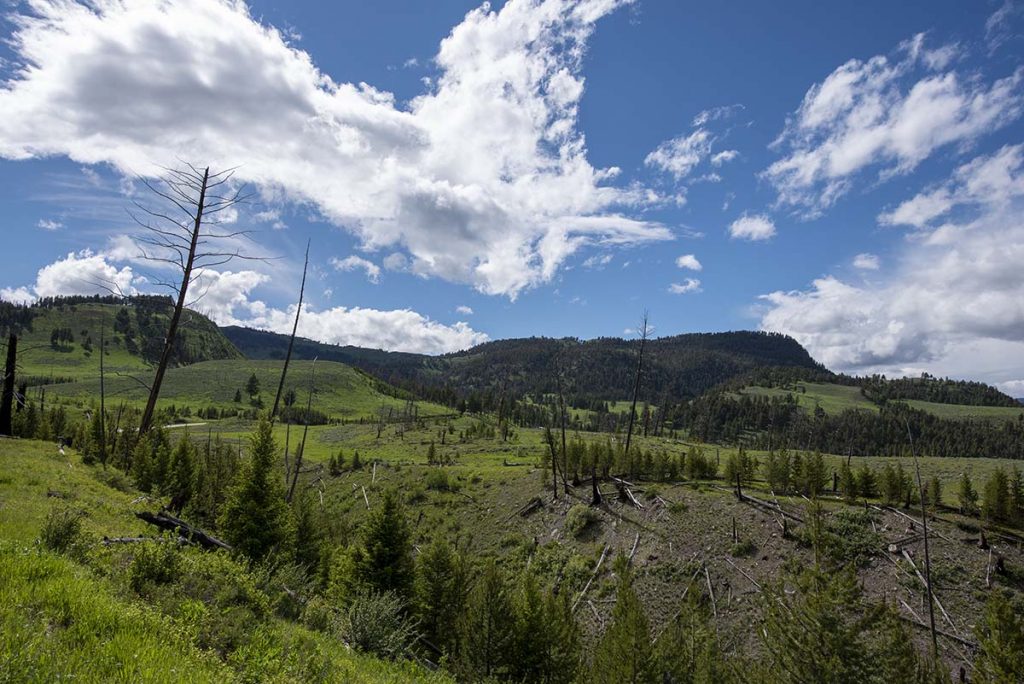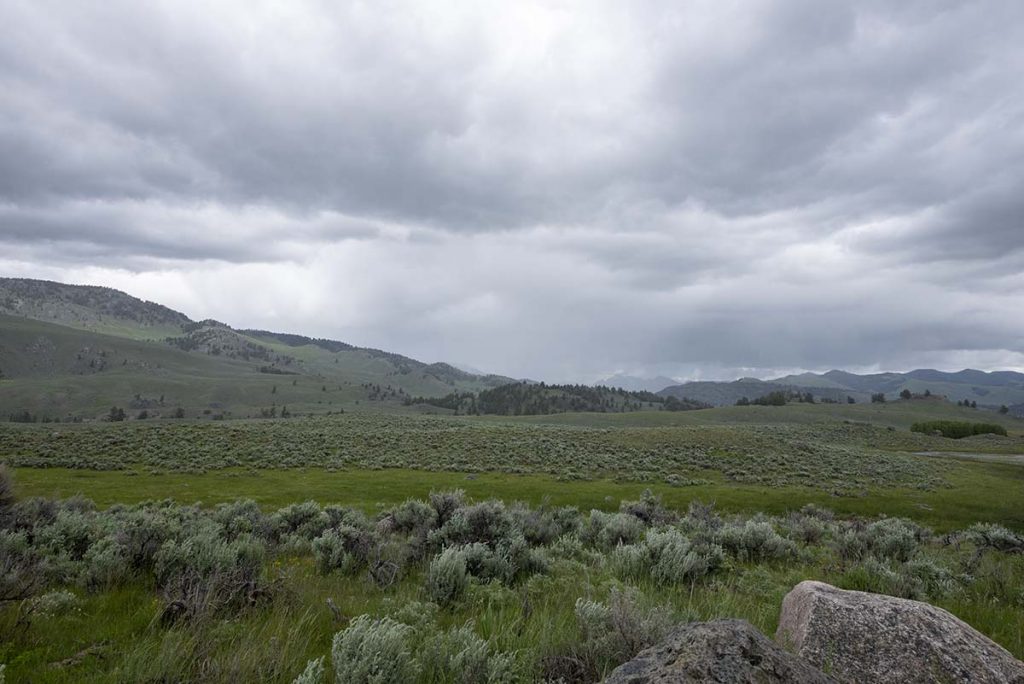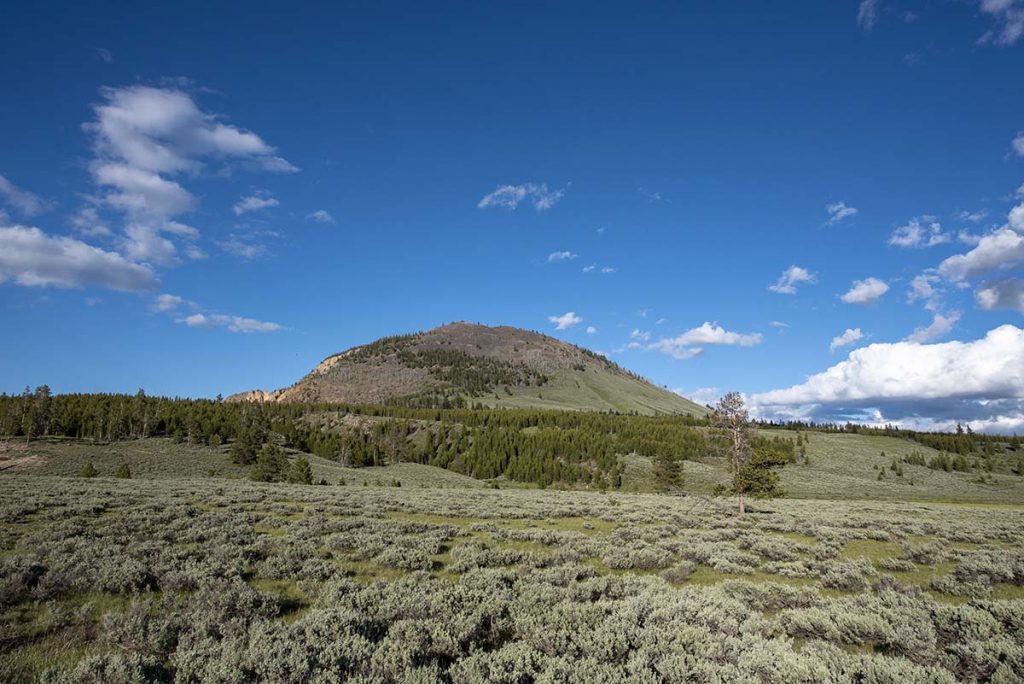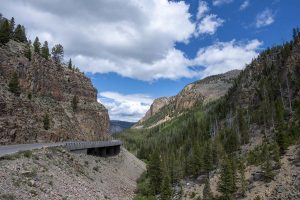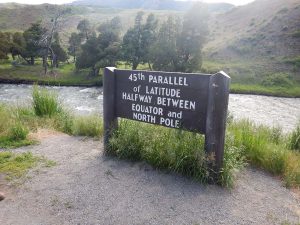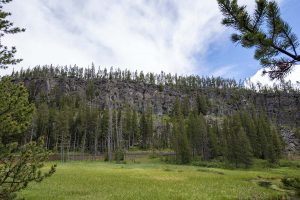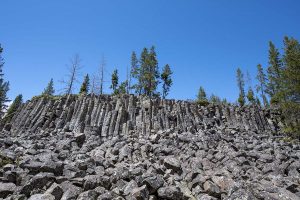Day Twelve: June 21 (posted June 23)
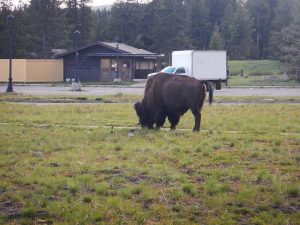
Besides exploring geyser basins yesterday, I also transferred from the Old Faithful cabin to one in the Lake Yellowstone area. This morning, waking up in my new headquarters, I found a buffalo grazing on the lawn outside.
A section of Yellowstone’s Grand Loop Road is closed for construction: the northeast section that climbs over a high pass above the treeline. What you see there is not much different from the comparable section of Rocky Mountain National Park, so I wasn’t bothered by having to miss it on this visit. But it does require a bit of back-and-forth along the rest of the road, since you can’t just take the loop all the way around.
So my plan for the day was to head north along Grand Loop, from Lake Yellowstone up to the canyon, then take the shortcut across to the west side and continue north up to Mammoth Hot Springs in the northwest corner. It was a cold and rainy morning, with dark threatening clouds overhead, but I got an early start anyway.
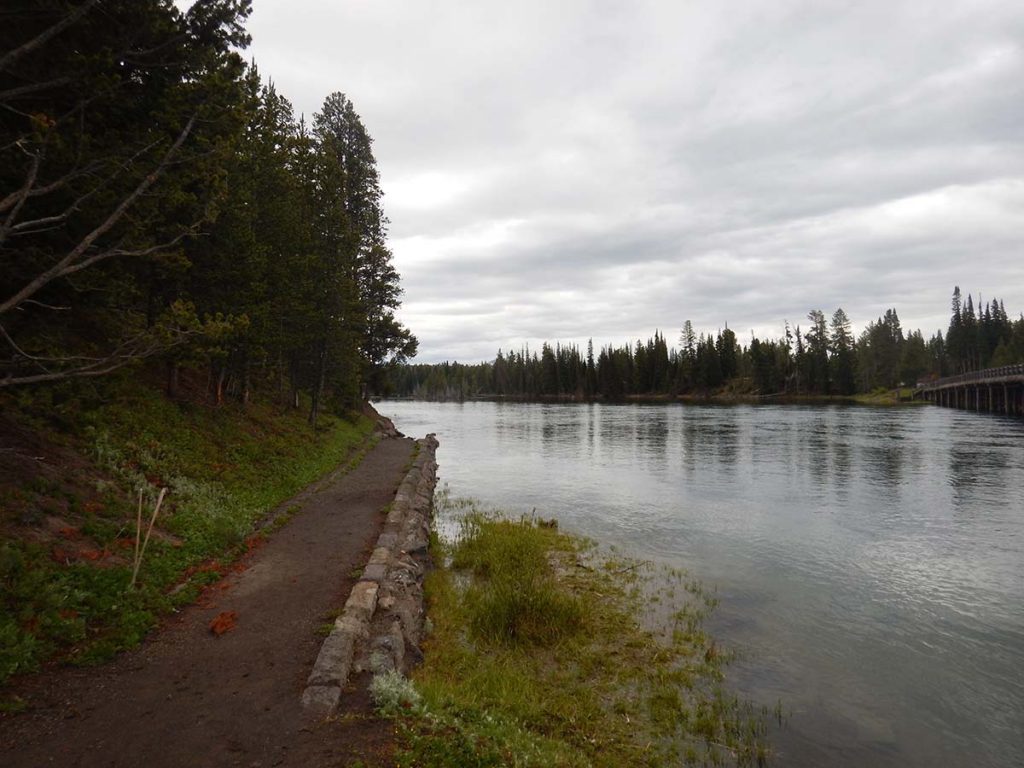
The lake’s outlet is the Yellowstone river, which leaves the lake as a broad and slow-moving stream.
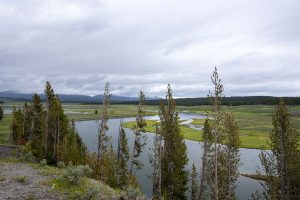 |
It meanders over broad plains, like here in Hayden Valley. |
| Occasionally picking up speed when its path narrows, like here at the LeHardy Rapids. | 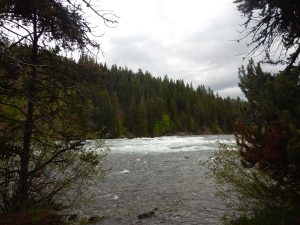 |
But on the whole, you’d think it was a pretty peaceful, broad river. But you wouldn’t want to be innertubing down it, because all of a sudden it comes to this:
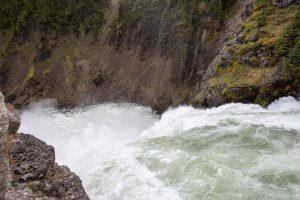 |
The Upper Falls, first of two massive waterfalls that send the river plunging down into the Grand Canyon of the Yellowstone. |
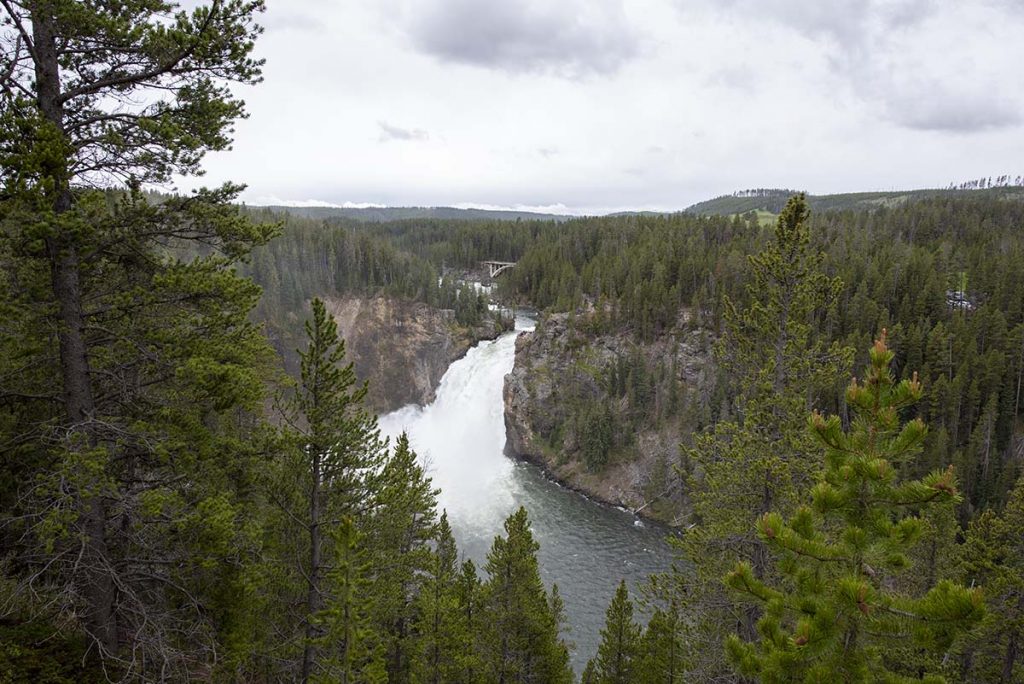
The second plunge, over the Lower Falls, comes up not much farther downstream.
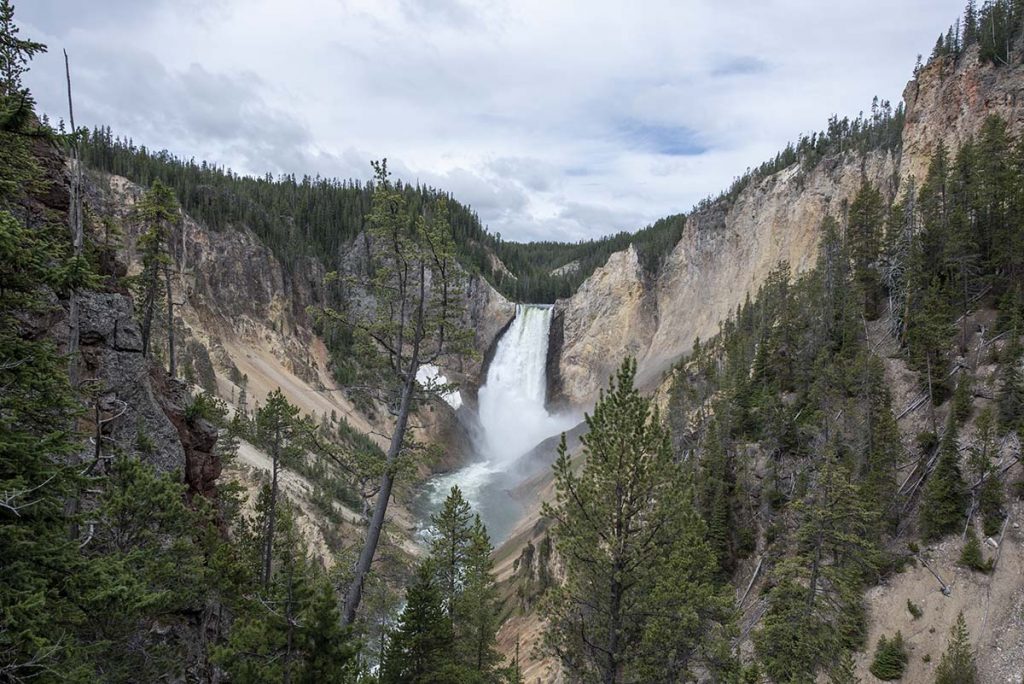
Along the road from the lake to the canyon lies another thermal area, the “Mud Volcano.”
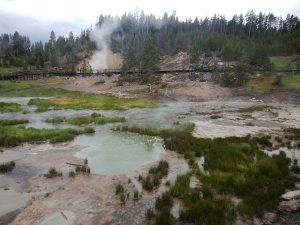 |
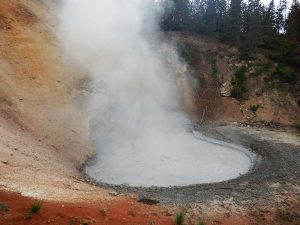 |
The actual Mud Volcano (above right) doesn’t look much like a volcano today. When it was discovered by the Langford expedition in 1870, it looked like a classic cone volcano in miniature, with boiling mud erupting from its peak, and so they named it. Two years later, another expedition found it had blown itself to pieces, leaving the pool it is today.
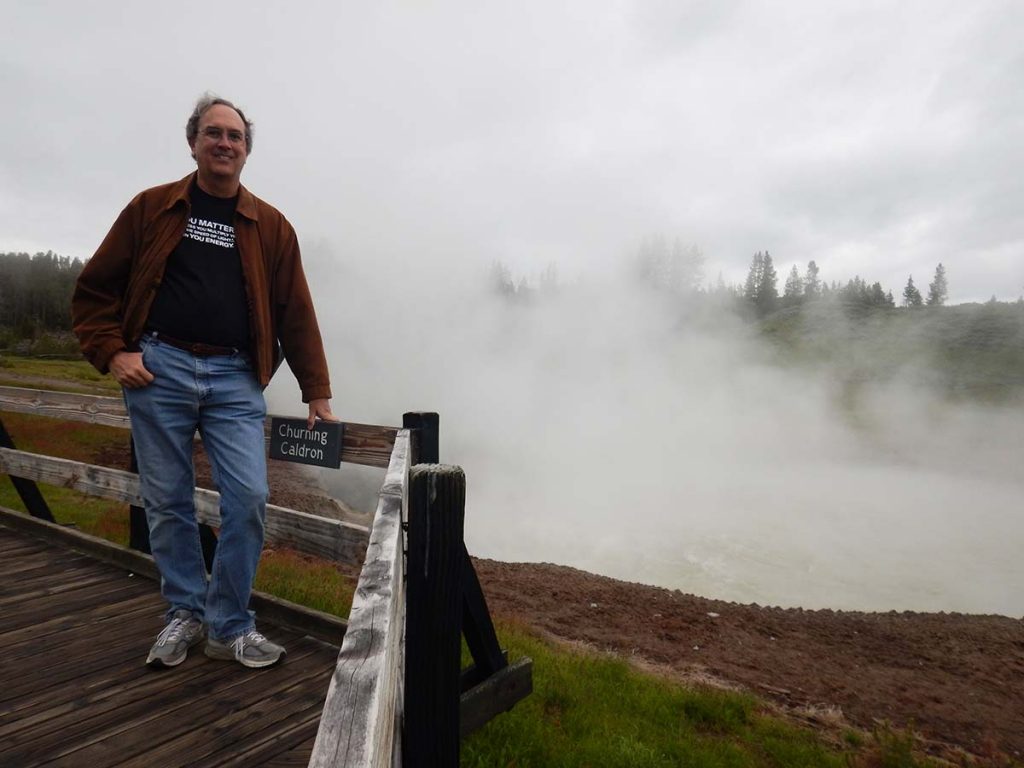
By the time I was done with the Canyon and Mud Volcano areas, the sun was starting to come out. Through the afternoon, periods of sun and warmer temperatures alternated with thunderstorms rolling through, lasting a few minutes and then clearing up again. Here are some pictures along the way as I drove on up toward Mammoth.
I’m starting to realize how much I did on this particular day… this is getting to be a pretty long blog post and I’m not done yet.
In the northwest corner of the park is Mammoth village. When Yellowstone first became a national park (the first in the world) in 1872, there was as yet no park service to operate it. It was the US Army that was given the responsibility, and the Army’s camp was here at Mammoth. Park headquarters is still here, along with a cluster of historical buildings reflecting the earliest history of the park.
I did not take a picture of any of it. I went to look at Mammoth Hot Springs instead, the reason why the Army set up park headquarters here and not somewhere else.
 |
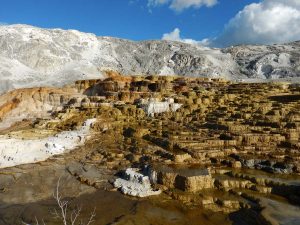 |
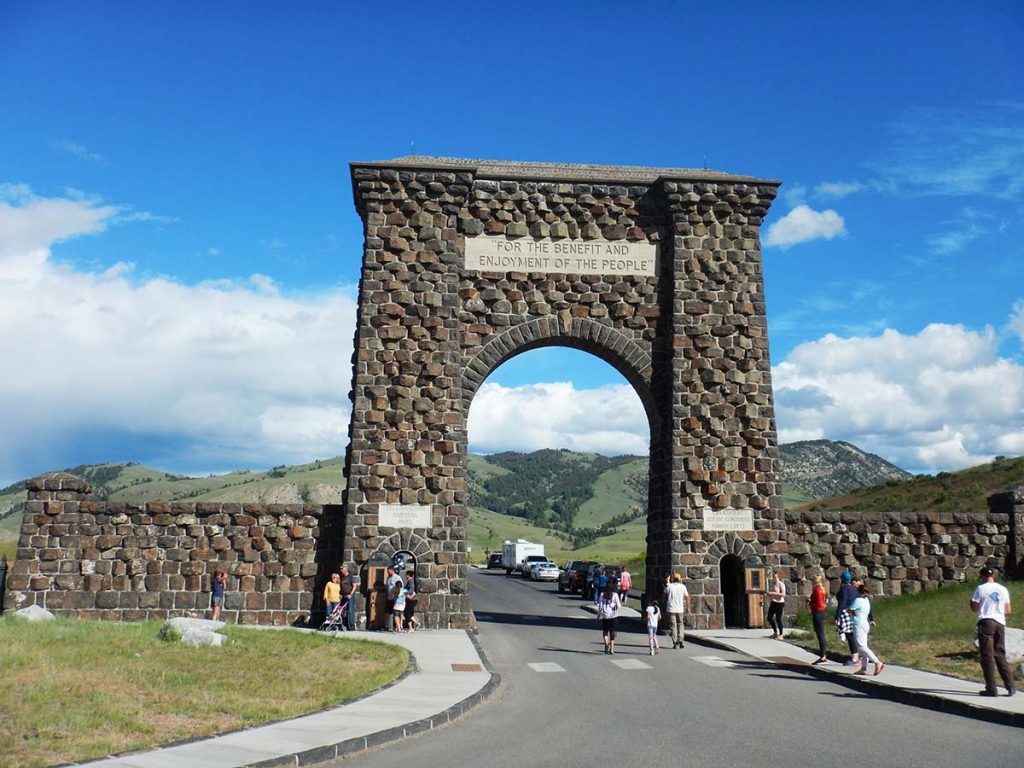
After Mammoth Hot Springs, I drove up to the north (original) park entrance. The archway here quotes the legislation that established Yellowstone as the world’s first national park for “the benefit and enjoyment of the people.”
I had dinner outside the park in Gardiner, Montana, the town right outside the north entrance. After that, I still wasn’t done: it’s the longest day of the year and there’s plenty of sunlight left!
I had earlier tried to see another thermal area, “Artist’s Paint Pots,” but a line of cars half a mile long to get into the parking lot changed my mind. On my drive back south, with evening coming on, the crowds had mostly dispersed and I had a look.
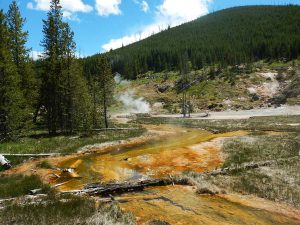 |
 |
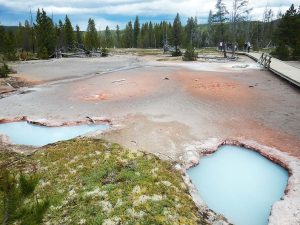 |
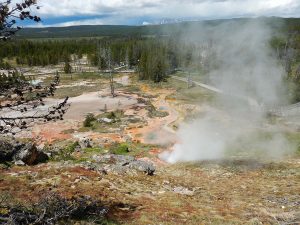 |
Finally, at the end of a long day (and a long blog post) I headed back to my cabin on Lake Yellowstone. Only one day in Yellowstone left.
Look at today’s mileage— that’s how big Yellowstone is. But it’s not like you’re having to spend time driving from one sight to another; every hundred yards of the drive is a sight to behold in its own right.
Trip Report
Miles driven today: 199.2
Total miles so far: 2344.7

